BLOG
Kettlebell Basics: How to Get Started
When starting a Kettlebell program anticipate a learning curve. Think of using a kettlebell like learning martial arts, each progression like moving up in a belt. Using this analogy, a deadlift can be considered a white belt, a blue belt the two handed swing, and a black belt the double bell snatch.
Jun. 12, 2023
Dr. Ben DeLuca, DC

Where to Get Started with Kettlebells
When starting a Kettlebell program anticipate a learning curve. Think of using a kettlebell like learning martial arts, each progression like moving up in a belt. Using this analogy, a deadlift can be considered a white belt, a blue belt the two handed swing, and a black belt the double bell snatch.
You can still get tremendous results in performance without increasing or leveling up your kettlebell skills to the next belt by mastering the basics. As the legend Bruce Lee once said, “I fear not the man who has practiced 10,000 kicks once, but I fear the man who has practiced one kick 10,000 times”.
The challenge kettlebells provide, the feeling of accomplishment when learning new exercises, coupled with the benefits of increases in speed and power are very rewarding for all who stick with the program. Whether you're younger, older, beginner, athlete, or fitness enthusiast the kettlebell provides an enriching opportunity to expand your fitness arsenal and skill set.
Below are a couple exercises we use to both help get people over the fear of load as well as introduce basic strength training strategies to get stronger and prepare them for more athletic explosive movements like the swing. The KB deadlift and the suitcase march or single leg suitcase balance are a couple of our favorites, and can be easily adapted to existing programs.
Try them out, let us know what you think.
The Kettlebell DeadLift
The KB deadlift is a safe and effective starting point to introduce the deadlift or hip hinge pattern. It can be the 1st step in gaining confidence to pick up weight off the ground and lead to future progressions into heavier barbell or trap bar methods.
Its shape and handle allows for easy grip and floor placement directly under a person's center of mass. In order to get the bell under your center of mass you want to line the handle (AKA the horns) of the bell inline with your ankles as a start point.
The key to a successful deadlift is having tension in the legs feeling long arms as you begin to push your feet into the ground. You should feel like a spring coiled up ready to explode up.One of the most common faults we see is lack of tension in the legs and forward head position (loss of neutral neck).
Sometimes one of or the combination of these two things may lead to a shift in the target tissue from the back of the legs to the low back. If you feel the low back working at first it's ok. Sensation does not always equal harm especially when we are learning new things. This is also part of the learning process as we look for improvement not perfection. Take time in the set up and you should feel the back of the legs and hip area working as you find the start position. It may be uncomfortable as the legs are fighting to maintain tension, this is usually a good sign. The set up is the foundation for the lift. My coaches words echo in my brain before each time I lift “Hard start for an easy finish”
Instructional video: https://youtu.be/P0w97WwRwVw
Common Faults:
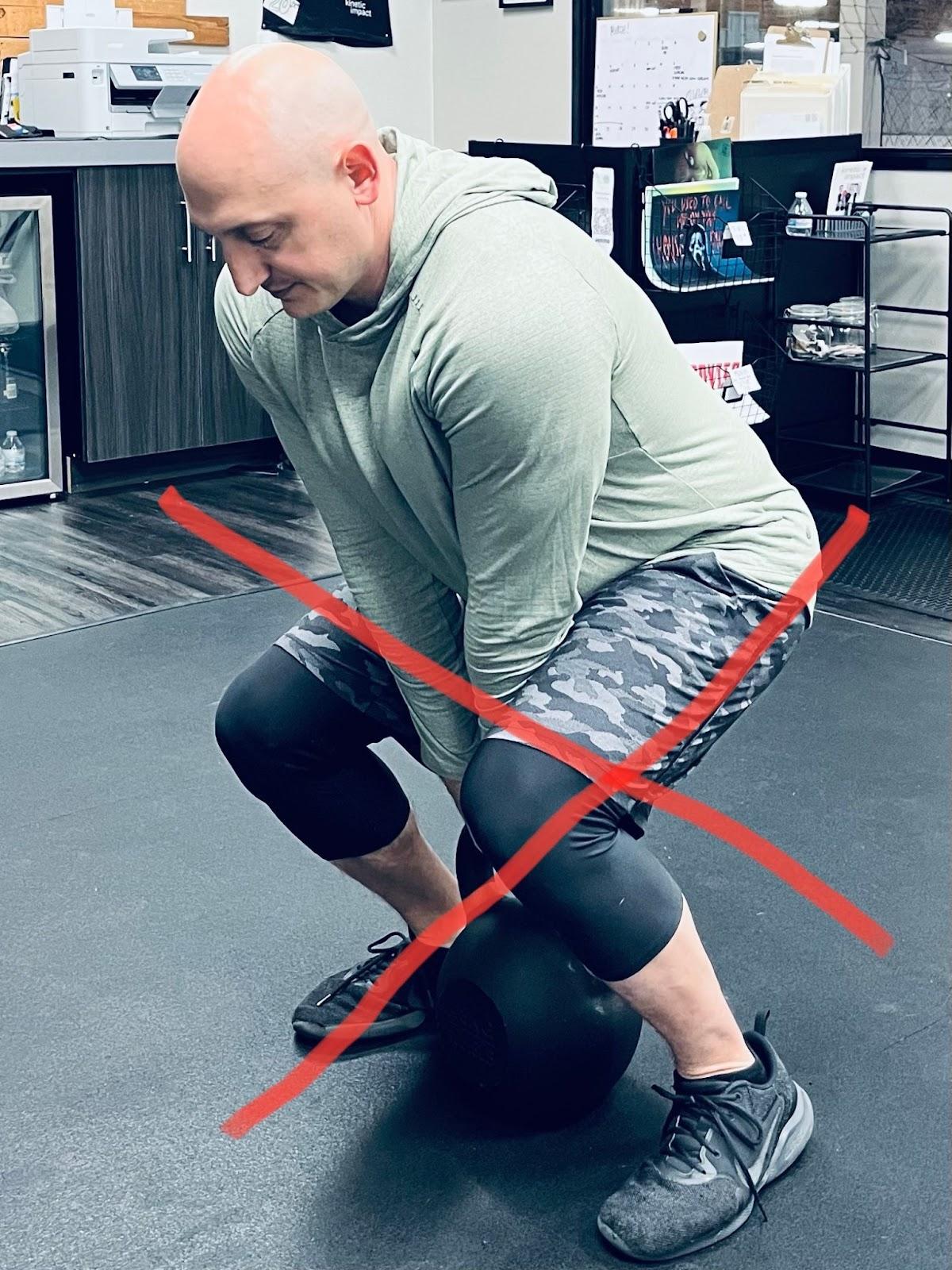 Too squatty Too squatty | 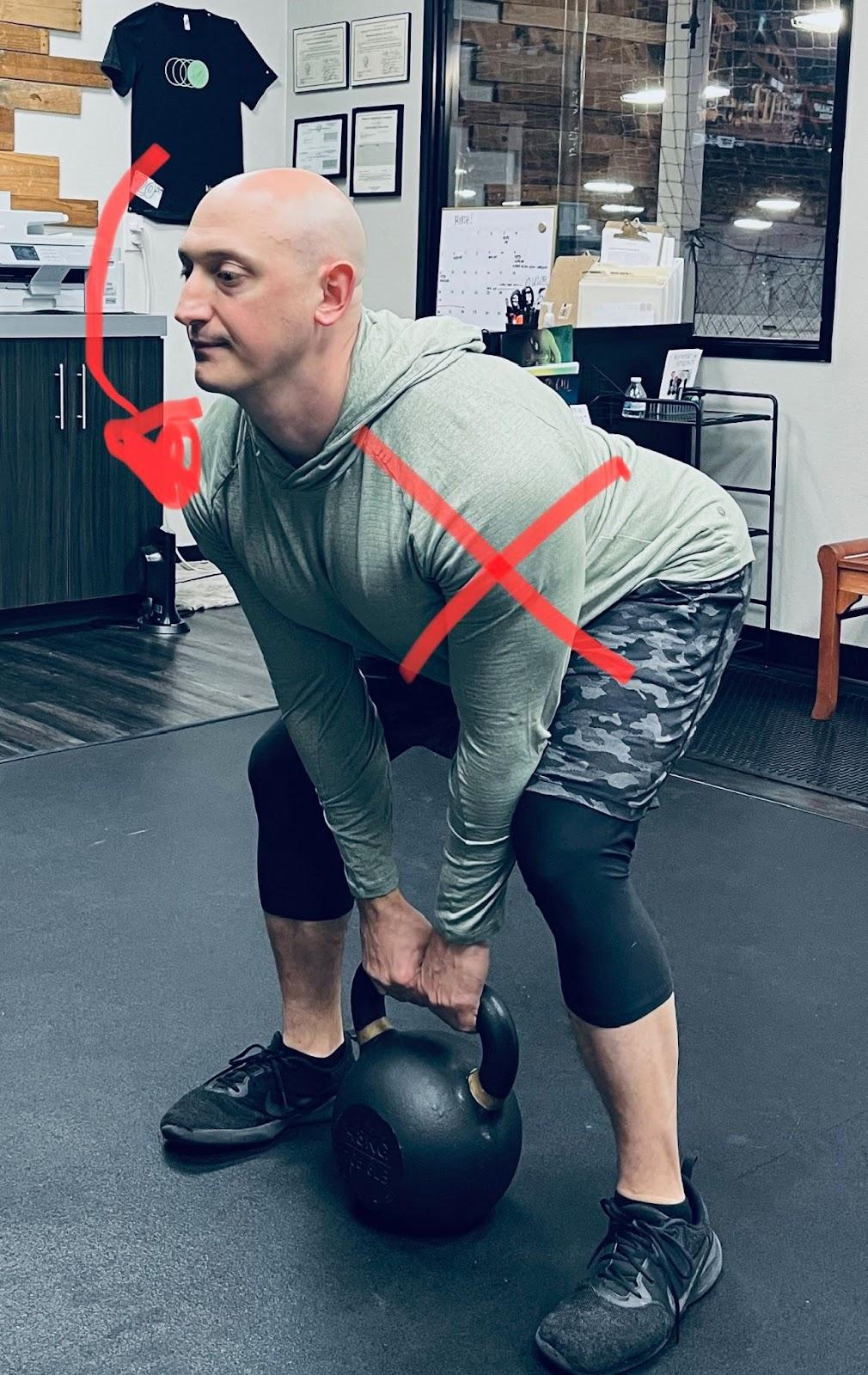 Extended Neck Extended Neck | 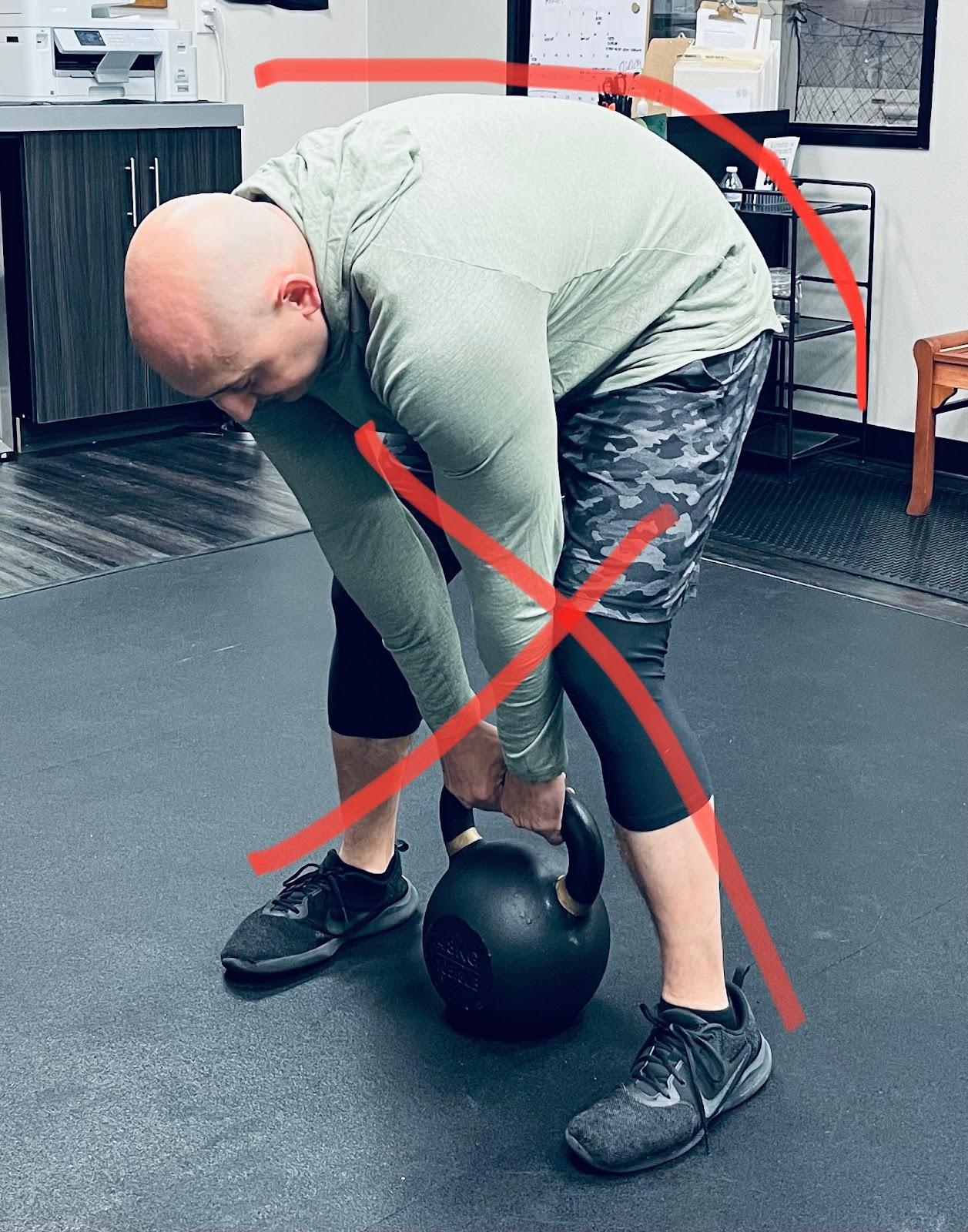 Rounded back “ Jumbo Shrimp” Rounded back “ Jumbo Shrimp” |
Correct start position and end position:
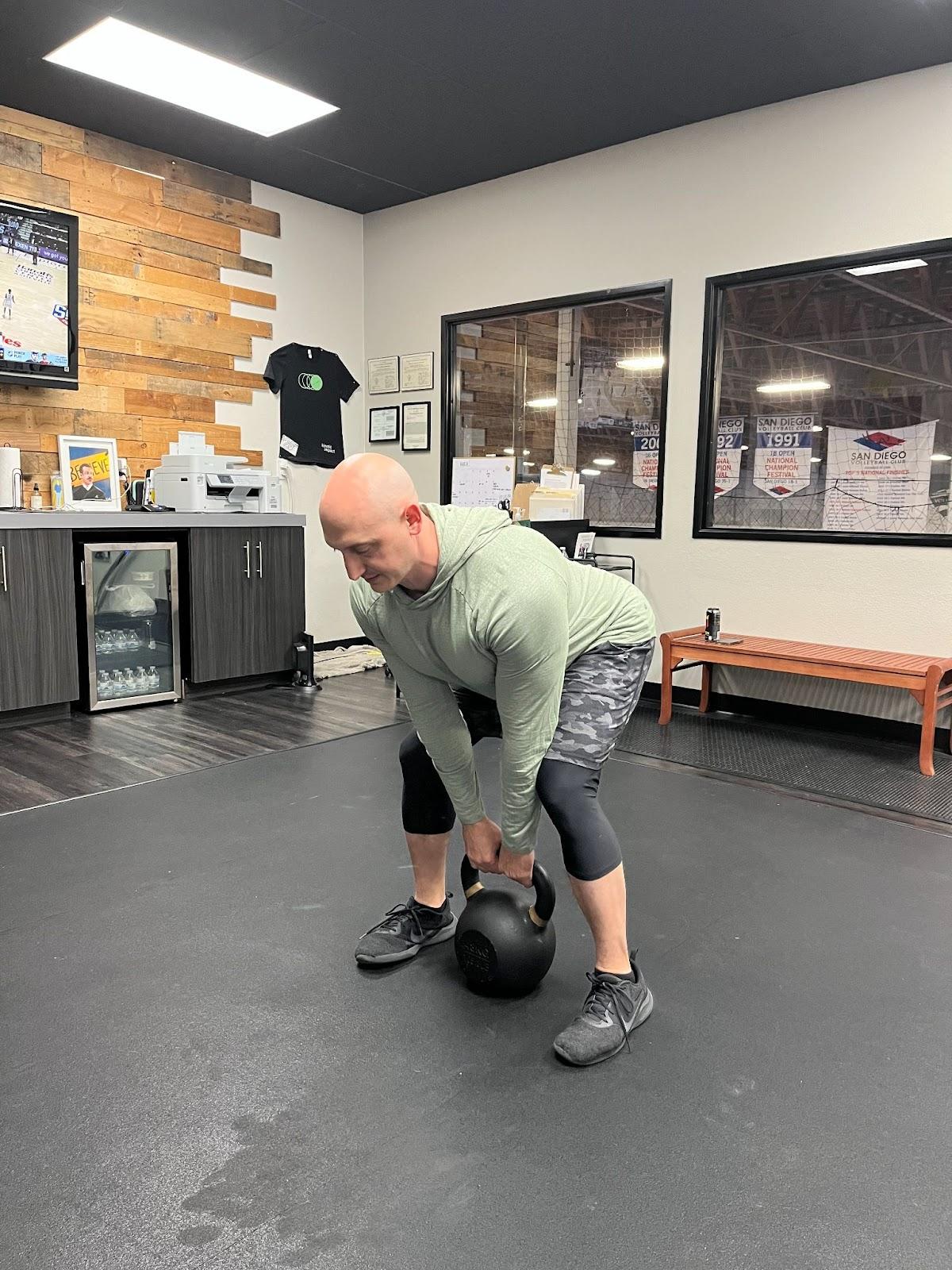 Start Start | 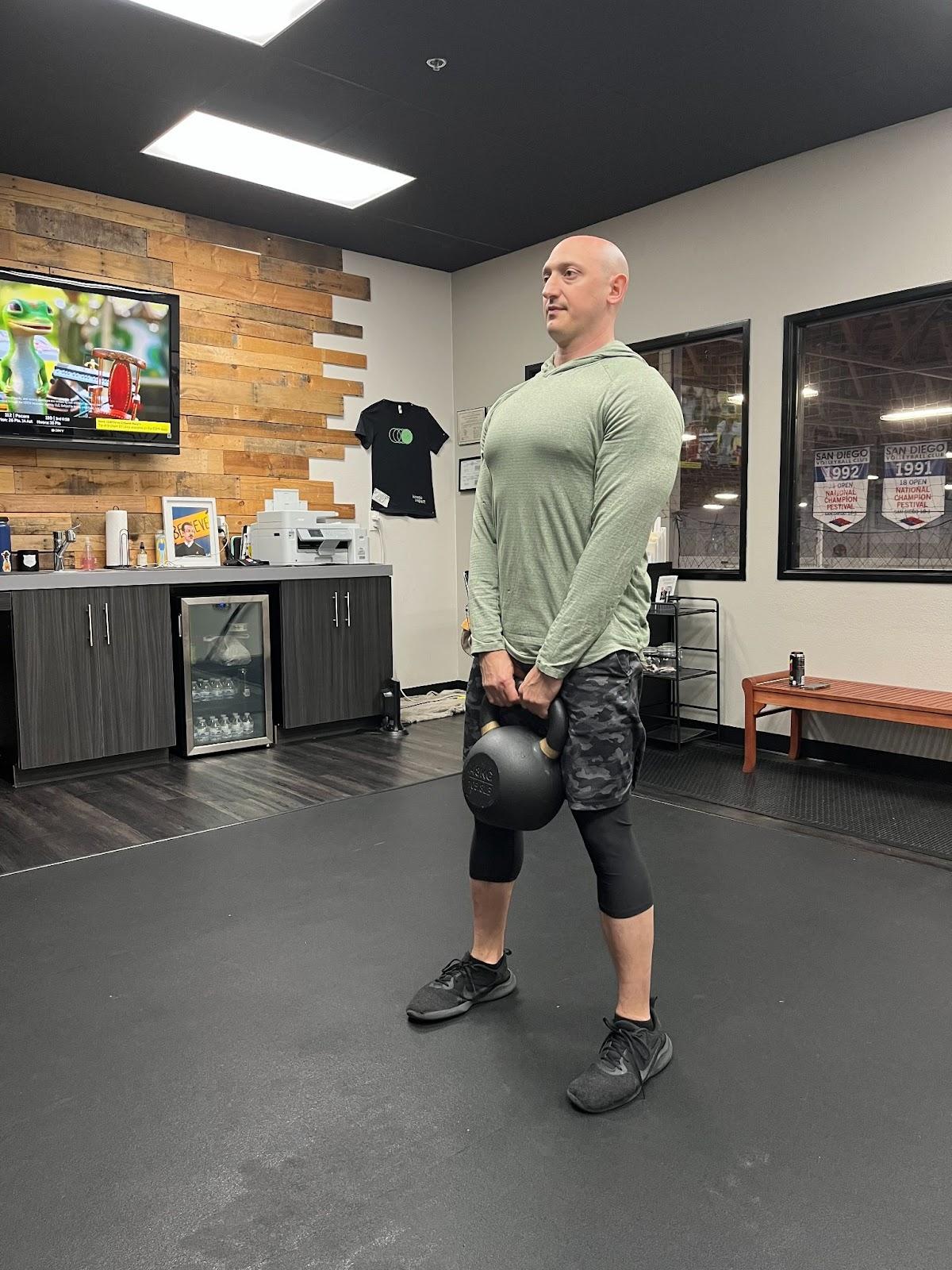 End End |
The Kettlebell Suitcase March
Kb suitcase march and single leg balance exercises have several benefits. It improves stability and promotes foot and ankle strength by rooting the foot into the ground.
We recommend you try this bare foot so you can feel the floor by pushing the foot hard into the ground while locking your leg out. You should feel the abs opposite to the side of the weight you're holding, working to maintain a neutral hip position.
Additional benefits include grip strength and core strength as you have to resist the force of the KB from pulling you sideways. This also can be a great introduction to load, providing useful information about a person's ability to balance.
An athlete may have the ability to do hard things well like jump over a hurdle but may lack the ability to do simple things like balance on 1 leg. An increase in skill and capacity to perform a single leg balance may help an athlete become less likely to sprain an ankle and an older person with fall prevention.
Instructional video: https://youtu.be/SUTuluoYato
Common Faults:
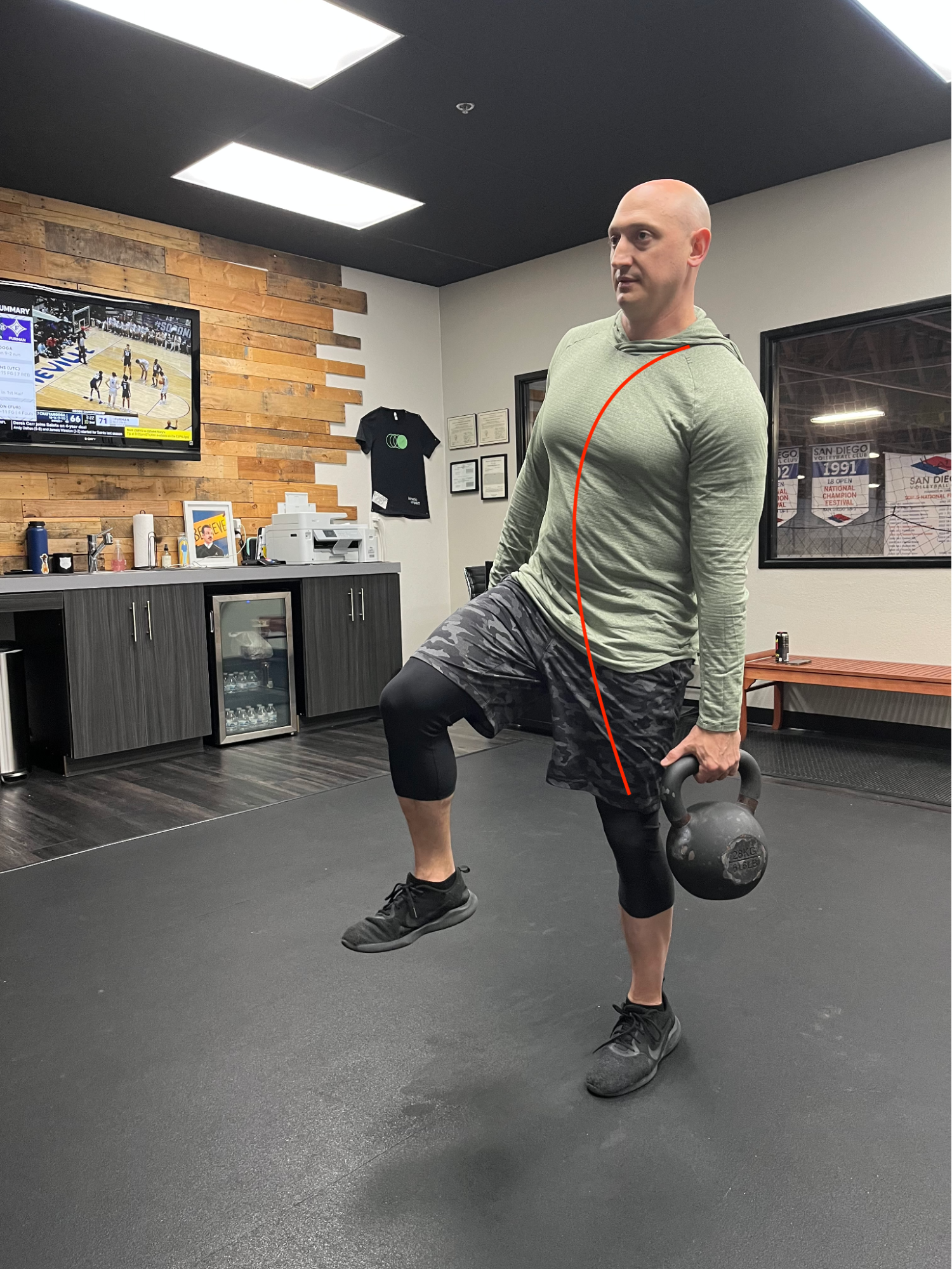 Hips shifting and shoulder sagged resulting in torso lean Hips shifting and shoulder sagged resulting in torso lean |  Knee bent without pushing into ground Knee bent without pushing into ground |
Correct Form
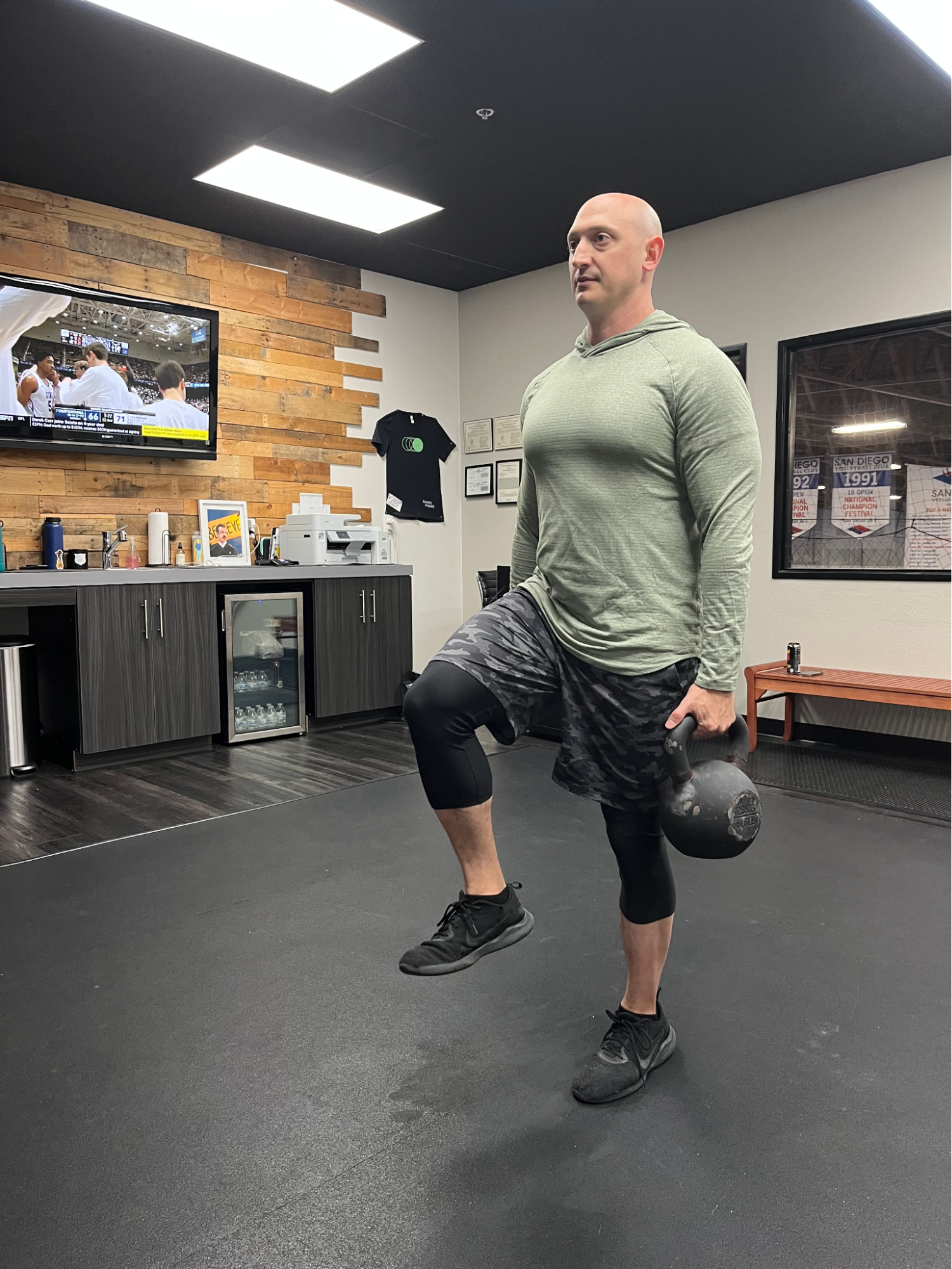 Hips and shoulders neutral resulting in upright torso Hips and shoulders neutral resulting in upright torso | 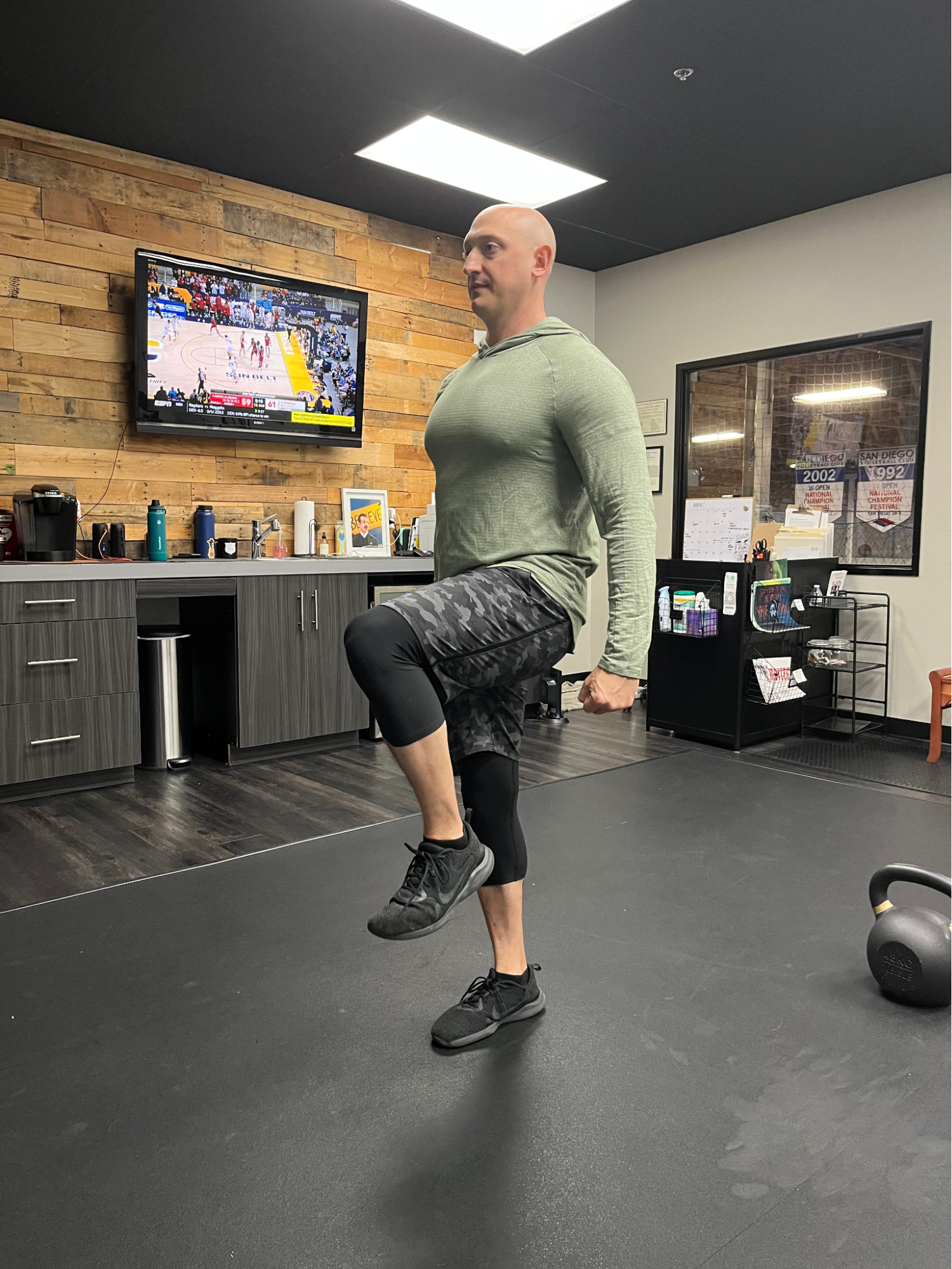 Knee straight as a result of pushing into ground with neck in tall neutral position Knee straight as a result of pushing into ground with neck in tall neutral position |
If flare ups occur do not abort the plan. Managing the symptoms and adjusting the strategy to stay on course for the long term goals is vital. This is true whether you use a kettlebell, barbell, dumbbell, run, walk, play golf, play basketball… anything and everything in between.
Related Posts
“Are Dancers Athletes?”
The simple answer to this question is F#$k yes they are! And for any dance athletes reading this you need to see yourself thi...
Read more
Is Caffeine Bad For Us
Is caffeine bad for us? Is there a certain amount of caffeine that is unhealthy? What does caffeine do? I feel like we get ba...
Read more
What to Expect from a Visit to Kinetic Impact
What You Can Expect... At Kinetic Impact our focus is on keeping our clients active and pain free. Our holistic approach comb...
Read more
Search the Blog